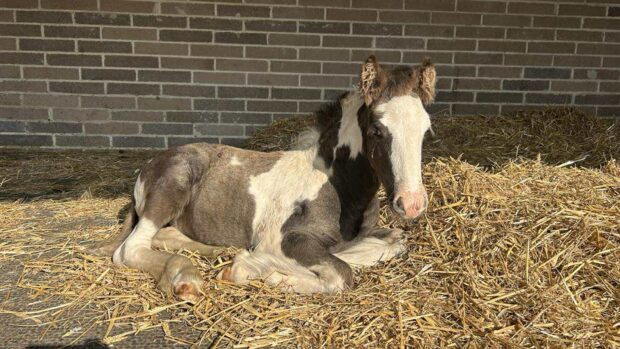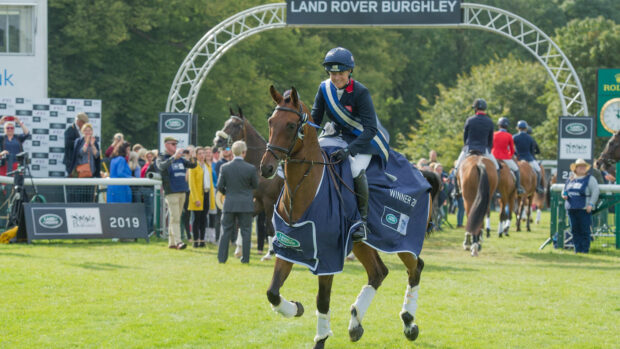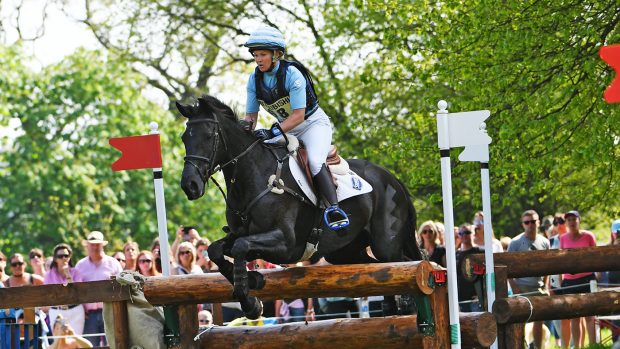Weaning, training and environment are among the most important things to get right to ensure horses have a good life – as is a positive mental attitude from the start.
These were among the messages at the second Better Beginnings for a Better Life conference organised by the British Horse Foundation (BHF) on 14 October.
Experts in equine training and research, and top riders, gathered to cover best practice for horses up to four years old, following on from the 2022 event, which covered to age two.
In her introduction, BHF chair Jane Nixon said: “The BHF is a conduit for collaborative facilitation of research and education to help people make informed decisions that result in the breeding of quality and, importantly, fit-for-purpose youngstock.”
Brad Hill, an assistant professor of equine clinical practice at Nottingham Vet School, spoke of the importance of positive mental attitude from the beginning.
“When Jane spoke to me about this, we had a chat about the young horse and she reminded me of the two most important things to get right; front foot conformation and weaning,” he said. “So I’m going to go back to the start, then take you on a journey.”
Prof Hill said weaning is one of the most stressful events in a horse’s life. But as there are many methods used, and lack of consensus on how stress and impact are measured, “we just don’t know the impact weaning has in terms of the rest of the horse’s life and career”.
He said there is the more traditional abrupt weaning, or more gradual approaches, and “we also see foals just chucked in together, a bit like Lord of the Flies, and expecting to learn from each other without any older friends in the group”.
Prof Hill and his team looked at a range of publications on the subject but found a lack of evidence. He recommended future work to determine the best method but said that in the second part of the study, welfare charity staff described horses rescued who showed weaning-related separation anxiety, even as adults.
“So I put to you, do you know how your horse was weaned?” he said. “Did you meet the dam and sire? Do you know anything about the early, crucial years in your horse’s life?
“There is research with key points about how we should do it. We should put them into a multi-age herd; they need to learn from others of different ages. We also know that if you get it wrong, you will increase the incidence of stereotypic behaviour, such as crib-biting and wind-sucking, eightfold.”
Prof Hill said research has shown that calves who were isolated after weaning are less resilient and able to problem-solve, which could also apply to horses, and which led him to consider equine learning theory.
“We all know that if you put your legs on a horse and the horse moves forward, you take the pressure of your leg away,” he said. “[At Burghley], we all watched Ros Canter achieve an incredible round across country that she made look effortless. Why? Because she was talking the language the horse understood. She was in harmony with her horse, she was using pressure and release or negative reinforcement.”
‘Positive punishment’
Prof Hill covered “positive punishment”, applying an adverse stimulus after unwanted behaviour, such as an electric fence, which is instant and teaches the horse to stay away from the fence.
“But use of a whip like this just simply doesn’t work,” he said. “You see riders have a stop at a fence, turn the horse away, give the horse a smack, and the horse doesn’t understand what for, because the timing is too slow. The horse is then more highly aroused, enters a state of confusion, and often then goes on to have more penalties.”
Top trainer and former British World Class eventing performance manager Yogi Breisner covered holistic equine training, which he said is a “huge subject”, about which everyone will have their own opinion.
“I find the more I know, the more I realise how little I know,” he said. “Every time I meet a new horse, I learn something.”
Yogi pointed out that horses did not ask to be ridden; we choose to ride them so it is our responsibility to ensure they have a good life. He said to him there are four basic aids that horses need throughout their lives to some degree: go forward, slow down, turn left and turn right.
“I’ve always wanted to make horses rideable and fit for purpose,” he said. “If you’re interested in hacking or trail-hunting, the horse doesn’t need to know piaffe and passage. But when you go to a grand prix show, if they can’t do flying changes, you’ll lose out. You need to realise what you need the horse to do then teach him those things so he’d rideable at the level you want.”
Yogi said for a horse to be fit for purpose, his mental wellbeing is as important as anything physical; it is part of holistic training to prepare a horse for what he will meet in life.
“There are four things for me that guide my training,” he said, adding that these are, most importantly, the horse, classical training, rules and trends, such as in judging and course-building.
“The most important ingredients we humans can bring is to study the horse and learn to read the signs,” he said. “When you start young horses, probably after weaning the most traumatic part of life is when they get a rider on their back. In the wild, anything that jumps on its back means danger. I don’t like the word ‘breaking’, it’s better to say ‘starting a horse’; the first step is for the horse to accept a human being on its back.”
Yogi covered the fact horses learn by repetition, sending signals from the brain to the muscles, and that using classical aids means horses can be ridden by others.
“But it’s not just about riding,” he said. “What makes a horse reluctant to do what we want? First if he doesn’t understand or second, he might not be physically incapable.”
The latter may be owing to pain or lack of training, Yogi said. He believes the more time he can spend with a horse, the more he can learn about and feel him; if he physically cannot do the job, this will come through.
Environment
Environment is also key to training, so the horse’s physical and mental wellbeing is optimised; such as his living arrangements and correctly fitted tack, as is getting the horse used to a variety of terrains and experiences.
“It’s our job to do varied training so the horse is fit for purpose and can go out and do his job,” he said, adding that it is up to the rider to realise when is the right time to progress or have a break in a young horse’s development.
“If you look at all the different aspects of a horse’s life, not just the right training, so he feels good about life, then he’s ready to perform well for you and you can enjoy hopefully a long and successful career with your horse, whether you want to go hacking or compete at the Olympics,” he said.
Leading sport horse clinician, researcher, rider and vet Rachel Murray spoke of the importance of developing strength and stability in young horses to prevent injury and build confidence, and how the exercises needed to build this have to be tailored by an expert to each individual.
Jan Birch, of the University of Liverpool, covered sustainable management of “the other 23 hours”, when young horses are not in active training.
She explained how important turnout is, for reasons such as increasing confidence, musculoskeletal development, socialising, respiratory health and nutrition, but that we cannot all turn out in herds on open plains.
She said track systems can be very beneficial for older or overweight horses, but “youngsters flying around” with all the fencing may not be practical, and the poached ground that can result may not be ideal for young horses either.
“We’ve got wetter winters coming,” she added. “We need to think about the best alternatives.”
She said individual stabling has issues with socialisation, movement and trickle feeding, which is not ideal for youngsters, and although group stabling addresses the first concern, it still does not give opportunity for enough movement, which is so important for physical development as well as mental wellbeing.
“Recent research looks at open barns, so group-housed stock with an open area and stations they can go to for food, toys, trickle feeds,” she said. “With a good surface so youngsters can still run around.”
In summing up, eventer Pippa Funnell, who had been on a panel discussing the topics, said: “We have to pull together, the whole equestrian world. I’m thankful to all the speakers as we do never stop learning. We have to get across the companionship. I look at the horses and well up as I’m that passionate about it and to have a best friend you have to be a best friend – that’s built on trust, mutual respect, empathy, compassion.
“That’s the key message I want to get across. It breaks my heart when horses are sold but I want people to feel the pure love of the animals I work with. That’s why I do it.”
- To stay up to date with all the breaking news throughout major shows such as London International and more, subscribe to the Horse & Hound website
You may also be interested in:

Mutual respect and good equine citizens: giving horses the best start in life

Starting young horses: the secrets to success from some of the industry’s best

Better beginnings: why giving horses the best possible start in life is key

‘Spectacular movement isn’t always good movement’: Becky Moody on young horses and her key training mantras

Subscribe to Horse & Hound magazine today – and enjoy unlimited website access all year round




